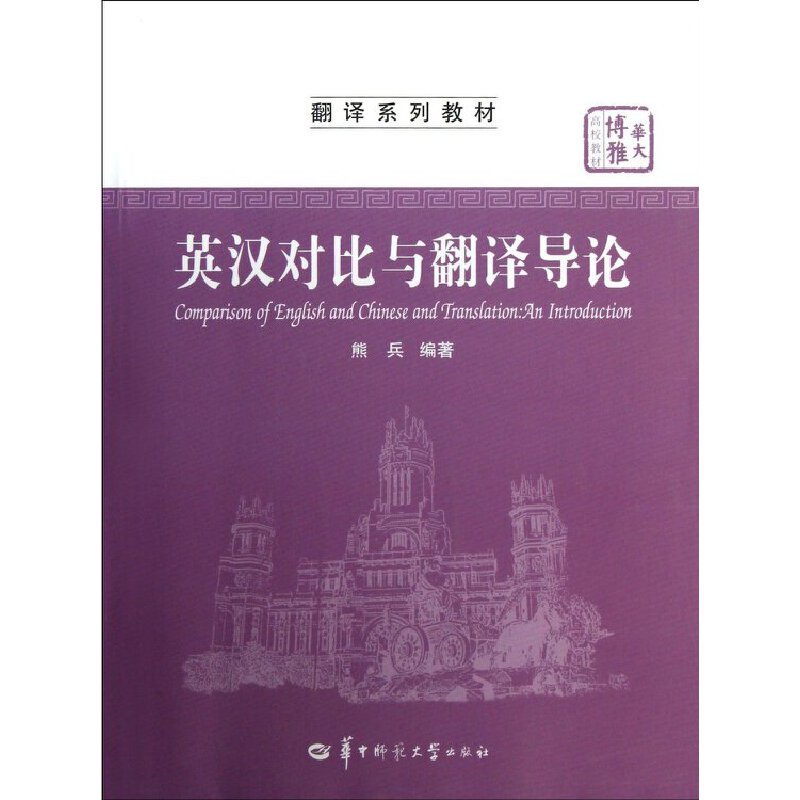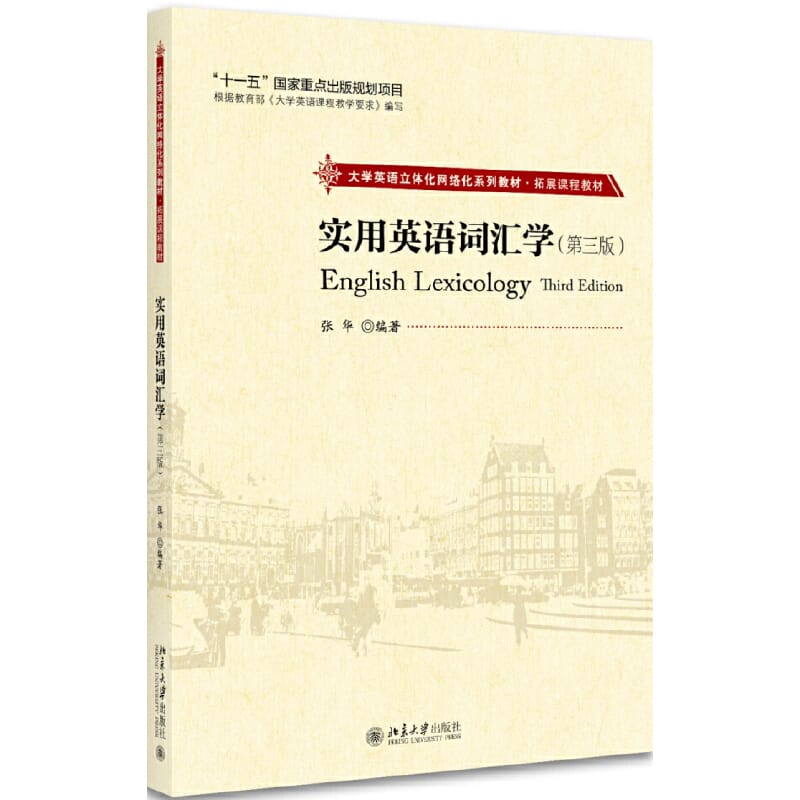对比语言学导论 / 21世纪英语专业系列教材
作者: 柯平
出版时间:2015年9月
出版社:北京大学出版社
- 北京大学出版社
- 9787301263334
- 1版
- 93372
- 0041169808-7
- 平装
- 16开
- 2015年9月
- 240
- H0
- 常用外国语
- 本科
本书主要创新之处包括:从理论与实践两方面分析阐明了英汉语言研究中的许多重要问题,并对英汉语言结构与功能差异背后的深层原因进行了探究;用符号学方法对句法和语义对比的理论基础进行了系统研究;在叉寸语言翻译、外语写作和口头交际特别重要的语篇和语用对比分析方面做了较多的填空补缺工作。
本书是国内第一部用英文撰写的语言共时对比研究著作,对于语言学、翻译学和外语教学等领域内的理论研究而言是一本材料翔实、观点与方法独到的专著,对于高等院校英、汉语言相关专业研究生的课程学习亦是一本有价值的教科书。
LIST OF FIGURES AND TABLES
PREFACE
CHAPTER 1 INTRODUCTION
1.1 What is Contrastive Linguistics?
1.1.1 The Name and Nature of Contrastive Linguistics
1.1.1.1 Linguistics
1.1.1.2 Contrastive Linguistics (Contrastive Analysis)
1.1.2 Micro-Contrastive Linguistics and Macro-Contrastive Linguistics
1.2 Why Contrastive Linguistics?
1.2.1 The Theoretical Need for Contrastive Linguistics
1.2.2 The Practical Need for Contrastive Linguistics
1.3 The History and Development of Contrastive Linguistics
Questions for Discussion and Research
CHAPTER 2 THE PRINCIPLES AND METHODS OF CONTRASTIVE ANALYSIS
2.1 Basic Assumptions and Hypotheses Underlying Contrastive Analysis (CA)
2.1.1 The Psychological Basis of Contrastive Analysis: Transfer
2.1.2 The Strong and Weak Versions of Contrastive Analysis Hypothesis
2.1.3 The Predictive Power of Contrastive Analysis
2.2 Theoretical Contrastive Analysis and Applied Contrastive Analysis
2.3 Criteria for Comparison
2.3.1 The Surface Structure (SS)
2.3.2 The Deep Structure (DS)
2.3.3 Translation Equivalence
2.4 Procedures of ContrastiveAnalysis
Questions for Discussion and Research
CHAPTER 3 PHONETIC AND PHONOLOGICAL CONTRASTIVE ANALYSIS
3.1 Phonetics and Phonology
3.2 Contrastive Phonetics
3.2.1 Articulatory Phonetics
3.2.1.1 Vocal organs (articulators) and the dynamics of voice production
3.2.1.2 The modulation of speech sounds
3.2.2 Acoustic Phonetics
3.2.2.1 Frequency
3.2.2.2 Amplitude of vibration
3.2.2.3 Timbre
3.2.3 Auditory Phonetics
3.3 Contrastive Phonology
3.3.1 Phonological ContrastiveAnalysis
3.3.1.1 The functional statuses of comparable speech sounds in different languages
3.3.1.2 Pronunciation problems caused by phonemic asymmetries and by allophonic differences
3.3.1.3 The functional loads of comparable phonological contrasts in different languages
3.3.2 Two Phonological Models
3.3.2.1 The taxonomic or structural phonology
3.3.2.2 Generative phonology
3.4 Suprasegmental ContrastiveAnalysis
3.4.1 The Contrastive Analysis of Pitch
3.4.1.1 Tone
3.4.1.2 Intonation
3.4.2 The Contrastive Analysis of Juncture
Questions for Discussion and Research
CHAPTER 4 LEXlCAL CONTRASTIVE ANALYSIS
4.1 Contrastive Lexical Morphology
4.1.1 Lexical/Derivational Morphology and Inflectional Morphology
4.1.2 Morpheme
4.1.2.1 Free morpheme
4.1.2.2 Bound morpheme
4.1.2.2.1 Affix
4.1.2.2.2 Combining form
4.1.2.3 Stem (base morpheme) and root
4.1.3 A Comparison of the Makeup of English and Chinese Word Stock
4.2 Contrastive Lexical Semantics
4.2.1 The Motivation (Internal Form) of Words
4.2.1.1 Phonetic motivation
4.2.1.2 Graphemic motivation
4.2.1.3 Morphological motivation
4.2.1.4 Semantic motivation
4.2.1.5 A contrastive analysis of the morphological motivation of English, German, and Chinese words
4.2.2 Sense Relationships
4.2.2.1 Syntagmatic semantic relationship: Collocation..
4.2.2.2 Paradigmatic semantic relationships
4.2.2.2.1 Synonymy
4.2.2.2.2 Antonymy
4.2.2.2.3 Hyponymy
4.2.2.2.4 Incompatibility
4.2.2.3 Lexical fields and lexical gaps
4.2.3 Semantic Features
4.3 Three Active Areas
4.3.1 Anthropology
4.3.2 Translation
4.3.3 Bilingual Lexicography
Questions for Discussion and Research
CHAPTER 5 GRAMMATICAL CONTRASTIVE ANALYSIS
5.1 The Concept of Grammar
5.2 The Contrastive Analysis of Inflectional Morphology
5.2.1 Grammatical Categories
5.2.1.1 Aspect
5.2.1.2 Case
5.2.1.3 Gender
5.2.1.4 Mood
5.2.1.5 Number
5.2.1.6 Person
5.2.1.7 Tense
5.2.1.8 Voice
5.2.2 A Contrastive Study of the Chinese and English Case Systems
5.3 Syntacti















